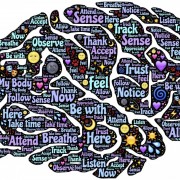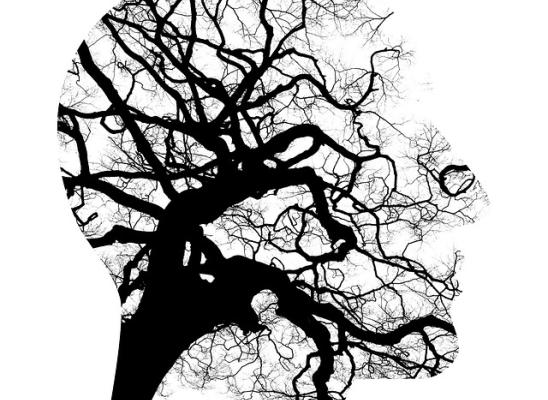Psychosocial Impact of Skin-Picking - What Do We Feel and Why?

Online test
Find out the severity of your symptoms with this free online test
Everyone has pulled at a scab or picked at a pimple just a little too much leaving them with an angry, red mark and feeling self-conscious. For people with skin picking disorder (SPD), that experience is intensified and becomes a compulsion that touches every aspect of life. It’s a disorder that is more common than you might expect. It is estimated to affect about 1 in 20 people or between 1.4% and 5.4% of the population. Although it can emerge at any age, onset generally occurs in adolescence, often coinciding with the onset of puberty. Women are much more likely to be affected.
Despite its prevalence, SPD is thought to be largely under-reported, and fewer than one-fifth of people affected actually seek treatment. Some of that reluctance is thought to be due to the notion that the behavior is just a “bad habit or for others, feeling embarrassed to get help. Those who do seek treatment generally see a primary care physician or a dermatologist as opposed to a mental health clinician. As a result, treatment tends to follow the path of medical intervention. However, while the skin lesions may require medical attention, SPD is much more than lesions. SPD often co-occurs with other mental health issues such as depression, anxiety, or substance abuse. There are also significant emotional and social elements facets of SPD that may be less obvious further confounding diagnosis and treatment. We know the clinical criteria but what do we know about the experience of living with SPD? And what does that emotional experience mean for someone living with SPD? Research is shedding light on the psychosocial and emotional experience of SPD and what they’re finding might surprise you.
The Emotional Side of SPD
The diagnostic criteria for SPD include, “the skin picking causes clinically significant distress or impairment in social, occupational, or other important areas of functioning.” What that means is highly dependent upon the individual. One thing we know about SPD is that it is highly heterogeneous. In other words, it is not a “one-size-fits-all” experience.
In addition to the physical picking behavior and its resulting skin insult, SPD is associated with a number of psychological and social impairments:
- Co-occurring disorders such as depression, anxiety, and substance abuse
- SPD is often misdiagnosed as OCD or body dysmorphic disorder
- Avoidance of social events, including work or school and other public social opportunities
- Elevated rates of suicidal ideation
These are some of the effects that you see. However, what is less obvious are the emotional experiences associated with SPD and how they might affect diagnosis and treatment. What is missing from the literature seems to be a qualitative examination of the emotional experience of SPD and its implications for treatment. Most of the research has been based on objective measures of skin picking that simply cannot capture the nuances and feelings that are part of one’s experience of SPD. Has anyone asked, “How do you feel?”
A 2017 study attempted to do just that. Researchers took a closer look at the subjective experience of living with SPD. Using posts from people in an online SPD forum, they sought to analyze and understand the experiences and perspectives of participants. Findings revealed perceived connections between disgust, picking, shame, and avoidance, whereby the experience of shame may contribute to a cycle of skin picking.
The Predominant Emotional Themes
Three overall themes emerged in the responses.
Theme 1: Get out of my skin
Responses showed an intense disgust and profound intolerance for any type of imperfection of the skin. These imperfections were sometimes seen as impurities. There seemed to be little motivation to injure or damage the skin. The resulting injury from the picking was viewed as an unintended consequence of removing the unwanted skin imperfection.
Researchers noted that there seemed to be a sense of separation between the self and the skin imperfection, prompting an “attack” response. Some responses suggested a strong pleasure or satisfaction gained from picking, particularly where it was done “just right”.
Theme 2: I am shameful
It was generally expressed that picking behavior was a shameful experience. Some participants found it difficult to disclose while others found the anonymity of the forum a safe place to disclose.
Along with shame, disgust was also present. Much of the experience of disgust was focused on the activity of picking. Some expressed the idea that picking was “childish” behavior that should have stopped long ago. There seemed to be some shame in the struggle of not being able to stop despite being an adult.
There was a prevailing sentiment of “something is wrong with me” which seemed to extend from the act of picking to the feeling of being a shameful person, that their symptoms meant they were in some way “less than.”
Some of the responses specifically noted feelings of shame related to roles as parents, their jobs, and even their relationships. Many expressed worry that their picking impacted their ability to parent well and were concerned that their behavior could impact their children in some way. This worry was reported by some as a motivator to seeking help.
Theme 3: No one must ever see
Much of the shame seemed to be driven by the idea that the picking was “obvious”, and people were “staring.” Hiding skin picking, avoiding situations where they might be exposed, and efforts to conceal the damage were common. Some went to great lengths and great expense to try and conceal the picking. The need to hide was the predominant psychosocial impairment. Hiding tended to include a complete avoidance of social interactions and refusal to leave home. Interestingly, the inability to conceal the skin damage was sometimes mentioned as a motivator to seek help.
Avoidance seemed to significantly impact the quality of life. Canceling plans, missing social occasions and significant life events, and missing work were common avoidance behaviors. Some expressed feeling regret that they were not able to overcome the need to avoid, adding to feelings of guilt and shame.
For some, avoidance extended to close personal relationships. Some reported trying to conceal their wounds from their partners. Others shared that they simply avoided close relationships.
Some individuals indicated that their shame could be affecting their opportunity for recovery. They expressed feeling reluctant to seek help due to having to reveal their picking. It was unclear as to the specific reason why, but the responses seemed to suggest shame in revealing the picking to a professional or even admitting the need for help.
The researchers believe that their study is the first to qualitatively explore the role of shame and disgust in the skin picking cycle. These themes suggest that shame is indeed an integral part of the SPD experience and extends from just the picking to shame about one’s body and self.
What It Means for Treatment
So, what can we take from these insights? Quite a bit.
Shame is a powerful emotion known to be a barrier to treatment for other disorders such as OCD. So, it makes sense that shame could well be a barrier to treatment for people with SPD. Online therapy or structured self-help programs could significantly reduce the fear of face-to-face encounters. Online therapy has become much more accessible and may help to overcome geographical or resource issues.
Understanding the skin picking cycle and the emotional process suggests a need for more emotionally-informed treatments. Aside from reducing the picking, the focus should also be on dealing with the shame, disgust, body shame, and other emotions that are part of the experience of SPD and drive the picking behavior.
If you’re someone dealing with SPD, this research is clear evidence that you are not alone in your struggle to find solutions. It also is a message of hope that people are talking about it and researchers are seeking to understand.
Finally, knowing that SPD is an under-diagnosed, complex disorder, it behooves clinicians to become more informed and attuned to assessing the more nuanced emotional symptoms of SPD.
As we learn more about SPD and other BFRBs, it becomes clearer that they are not either/or but both/and. Successful intervention requires treatment for both the body and the mind, understanding the complexity of emotions that lies just beneath. Continued research offers hope for emotionally-informed treatment approaches.
Resources
1. Lochner, C., Roos, A., & Stein, D. J. (2017). Excoriation (skin-picking) disorder: a systematic review of treatment options. Neuropsychiatric disease and treatment, 13, 1867–1872. https://doi.org/10.2147/NDT.S121138
2. Flessner, C. A., & Woods, D. W. (2006). Phenomenological characteristics, social problems, and the economic impact associated with chronic skin picking. Behavior modification, 30(6), 944–963. https://doi.org/10.1177/0145445506294083
3. Grant, J. E., Odlaug, B. L., Chamberlain, S. R., Keuthen, N. J., Lochner, C., & Stein, D. J. (2012). Skin picking disorder. The American journal of psychiatry, 169(11), 1143–1149. https://doi.org/10.1176/appi.ajp.2012.12040508
4. Anderson, S., & Clarke, V. (2019). Disgust, shame and the psychosocial impact of skin picking: Evidence from an online support forum. Journal of Health Psychology, 24(13), 1773–1784. https://doi.org/10.1177/1359105317700254
5. American Psychiatric Association. (2013). Diagnostic and statistical manual of mental disorders (5th ed.). https://doi.org/10.1176/appi.books.9780890425596
6. Grant, J. E., Odlaug, B. L., Chamberlain, S. R., Keuthen, N. J., Lochner, C., & Stein, D. J. (2012). Skin picking disorder. The American journal of psychiatry, 169(11), 1143–1149. https://doi.org/10.1176/appi.ajp.2012.12040508
7. Flessner, C. A., & Woods, D. W. (2006). Phenomenological Characteristics, Social Problems, and the Economic Impact Associated with Chronic Skin Picking. Behavior Modification, 30(6), 944–963. https://doi.org/10.1177/0145445506294083
8. Arnold, L. M., McElroy, S. L., Mutasim, D. F., Dwight, M. M., Lamerson, C. L., & Morris, E. M. (1998). Characteristics of 34 adults with psychogenic excoriation. Journal of Clinical Psychiatry, 59, 509-514.https://pubmed.ncbi.nlm.nih.gov/9818631/
Online test
Find out the severity of your symptoms with this free online test
Start your journey with SkinPick
Take control of your life and find freedom from skin picking through professional therapy and evidence-based behavioral techniques.
Start Now



